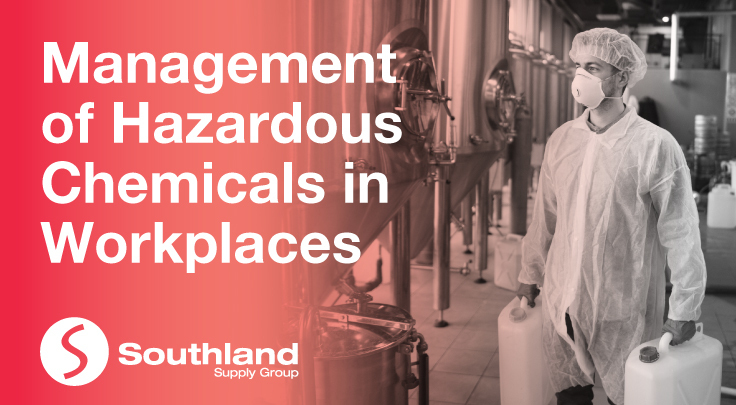
Chemical substances that can create a physical or health hazard are considered hazardous. Due to their properties chemical hazardous substances may be, but are not limited to, being toxic, explosive, flammable, self-reactive, oxidizing, or corrosive. Exposure to these substances by inhalation, dermal absorption, or ingestion can lead to serious health issues, sickness and even death. This shows the importance of knowing about the hazards associated with these substances.
Avoiding Chemical Hazards in the Workplace
Hazardous chemicals must be treated as a risk in the workplace. This includes storing, handling, and managing them correctly, to avoid harm to employees, members of the public, property and the environment. You should:
- Identify the hazardous chemicals in your workplace - Employers are required to identify and evaluate hazard(s) in their workplaces. Remember, you cannot control hazardous substances properly unless you have concise, relevant and accurate information. Even before a chemical arrives in a workplace, it needs to undergo a hazard assessment. That hazard assessment includes classification of hazards such as dangerous properties, risk of death, long term health problems, and environmental effects.
- Obtain a safety data sheet for all hazardous substances - A safety data sheet (SDS) provides complete information about the properties of a hazardous substance, how it affects health and safety in the workplace and how to manage these risks. An SDS explains how the substance should be safely used, stored, transported and disposed of. In addition to this, it also provides first aid information, information about the personal protective equipment that the person handling the substance should wear and what to do in the event of an emergency, such as a spill or fire. Other SDS tools are also recommended such as SDS station and SDS location sign.
- Ensure the hazardous substance containers are labelled - Labels are placed on hazardous substances containers so that people, including workers and emergency services personnel, know what's inside and can take the correct precautionary measures.
- Have proper hazardous chemical safety signs implemented – signs are an important part of hazardous substances management. Hazardous chemicals safety signs are placed at key points on your site, such as entranceways and on buildings, or in outdoor areas, where hazardous substances are used or stored. They should be clearly visible and let people know that hazardous substances are present, the type of hazard and what to do in an emergency.
- Store hazardous substances safely – Getting the right hazardous chemicals storage is an important part of protecting you and your workers. This includes storing only what you need, ensuring that incompatible substances are not stored together, and that decanted substances are stored in the right type of container and correctly labelled.
It is highly important to put a risk management plan in place whenever employees or employers are required to use, handle or store hazardous chemicals in the workplace. Let Southland Supply Group help you simplify your process and ensure safety and compliance with our wide range of hazardous chemical safety supplies. Our team can help you keep up with the ever-changing regulations so you can be sure you provide the best environment for your employees.
